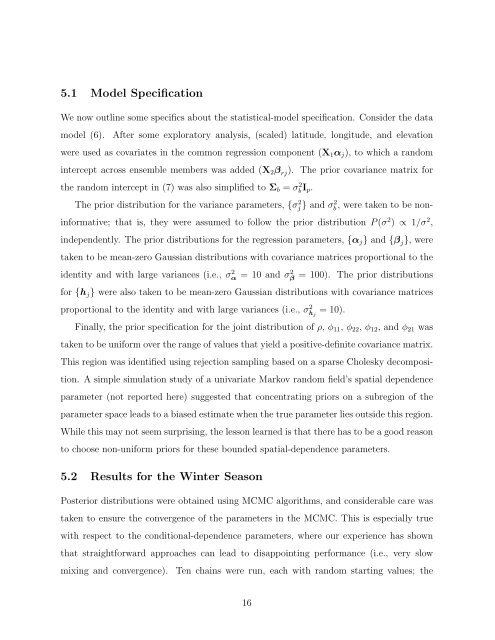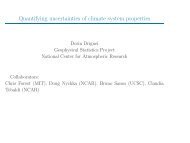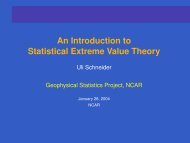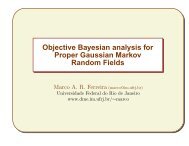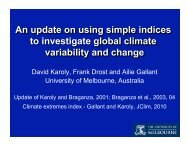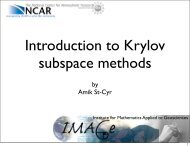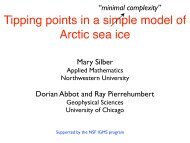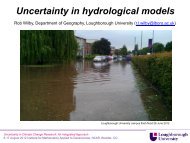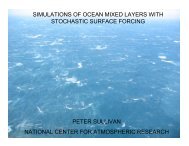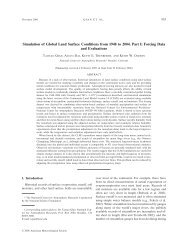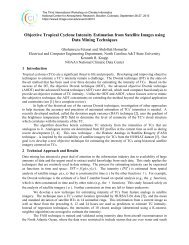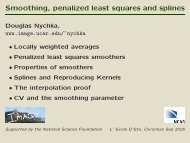A Spatial Analysis of Multivariate Output from Regional ... - IMAGe
A Spatial Analysis of Multivariate Output from Regional ... - IMAGe
A Spatial Analysis of Multivariate Output from Regional ... - IMAGe
Create successful ePaper yourself
Turn your PDF publications into a flip-book with our unique Google optimized e-Paper software.
5.1 Model SpecificationWe now outline some specifics about the statistical-model specification. Consider the datamodel (6).After some exploratory analysis, (scaled) latitude, longitude, and elevationwere used as covariates in the common regression component (X 1 α j ), to which a randomintercept across ensemble members was added (X 2 β rj ). The prior covariance matrix forthe random intercept in (7) was also simplified to Σ b = σ 2 b I p.The prior distribution for the variance parameters, {σj 2 } and σb 2 , were taken to be noninformative;that is, they were assumed to follow the prior distribution P (σ 2 ) ∝ 1/σ 2 ,independently. The prior distributions for the regression parameters, {α j } and {β j }, weretaken to be mean-zero Gaussian distributions with covariance matrices proportional to theidentity and with large variances (i.e., σ 2 α = 10 and σ 2 β= 100). The prior distributionsfor {h j } were also taken to be mean-zero Gaussian distributions with covariance matricesproportional to the identity and with large variances (i.e., σ 2 h j= 10).Finally, the prior specification for the joint distribution <strong>of</strong> ρ, φ 11 , φ 22 , φ 12 , and φ 21 wastaken to be uniform over the range <strong>of</strong> values that yield a positive-definite covariance matrix.This region was identified using rejection sampling based on a sparse Cholesky decomposition.A simple simulation study <strong>of</strong> a univariate Markov random field’s spatial dependenceparameter (not reported here) suggested that concentrating priors on a subregion <strong>of</strong> theparameter space leads to a biased estimate when the true parameter lies outside this region.While this may not seem surprising, the lesson learned is that there has to be a good reasonto choose non-uniform priors for these bounded spatial-dependence parameters.5.2 Results for the Winter SeasonPosterior distributions were obtained using MCMC algorithms, and considerable care wastaken to ensure the convergence <strong>of</strong> the parameters in the MCMC. This is especially truewith respect to the conditional-dependence parameters, where our experience has shownthat straightforward approaches can lead to disappointing performance (i.e., very slowmixing and convergence).Ten chains were run, each with random starting values; the16


